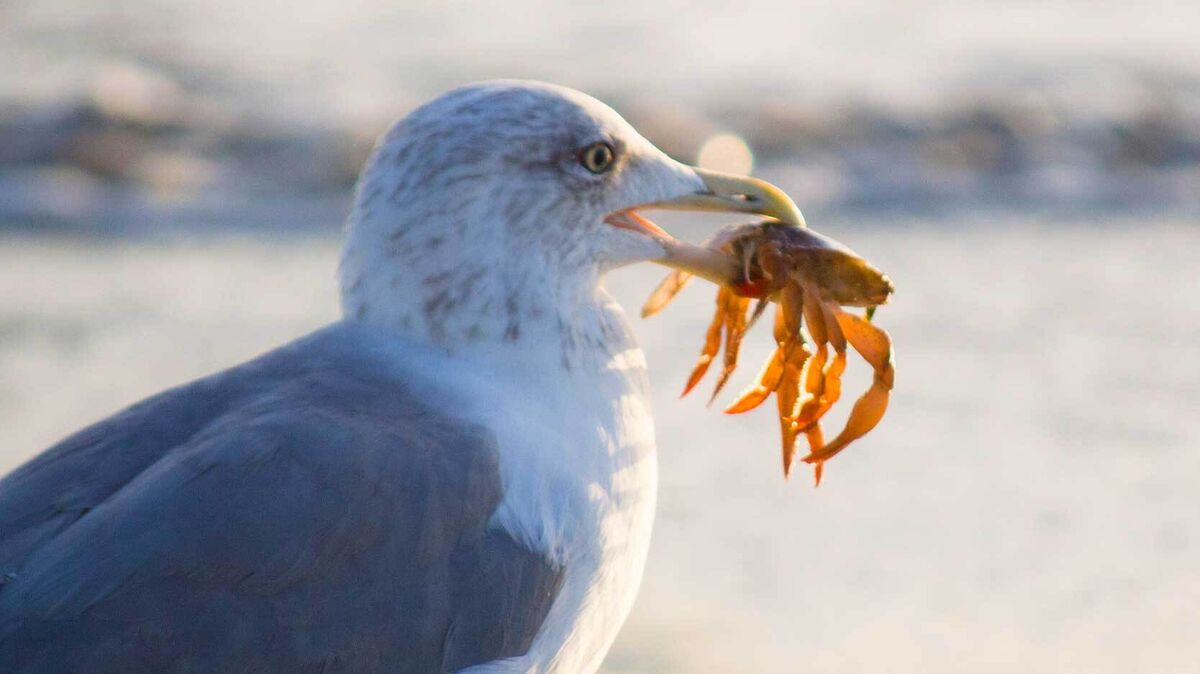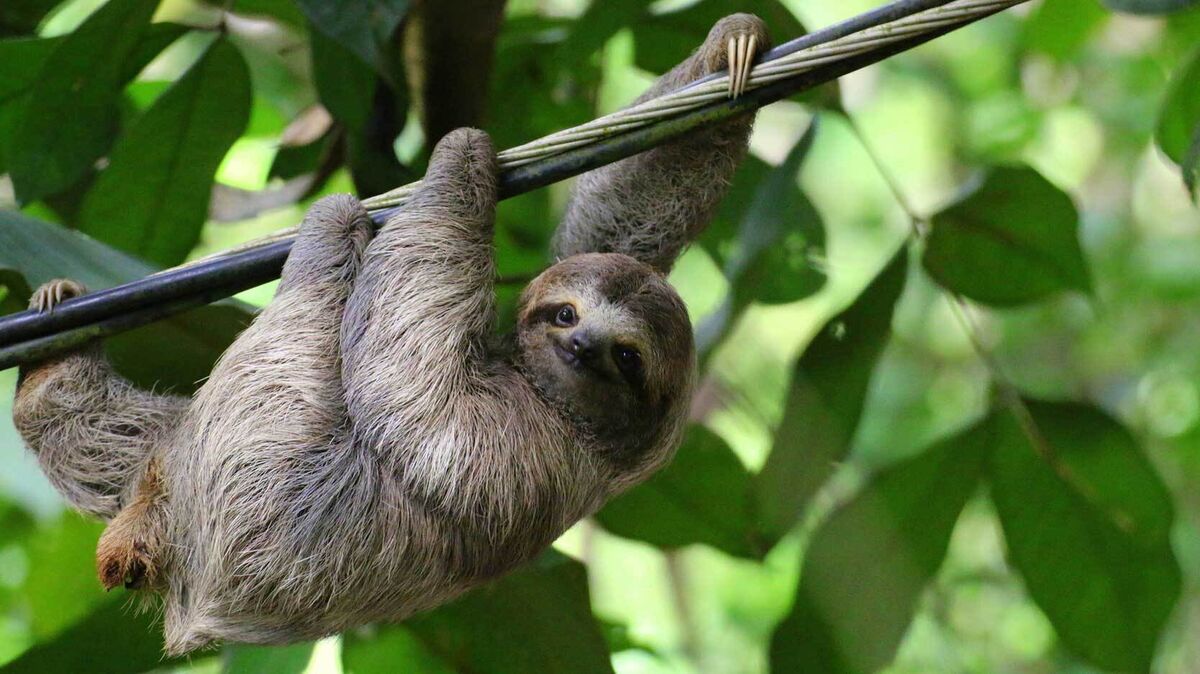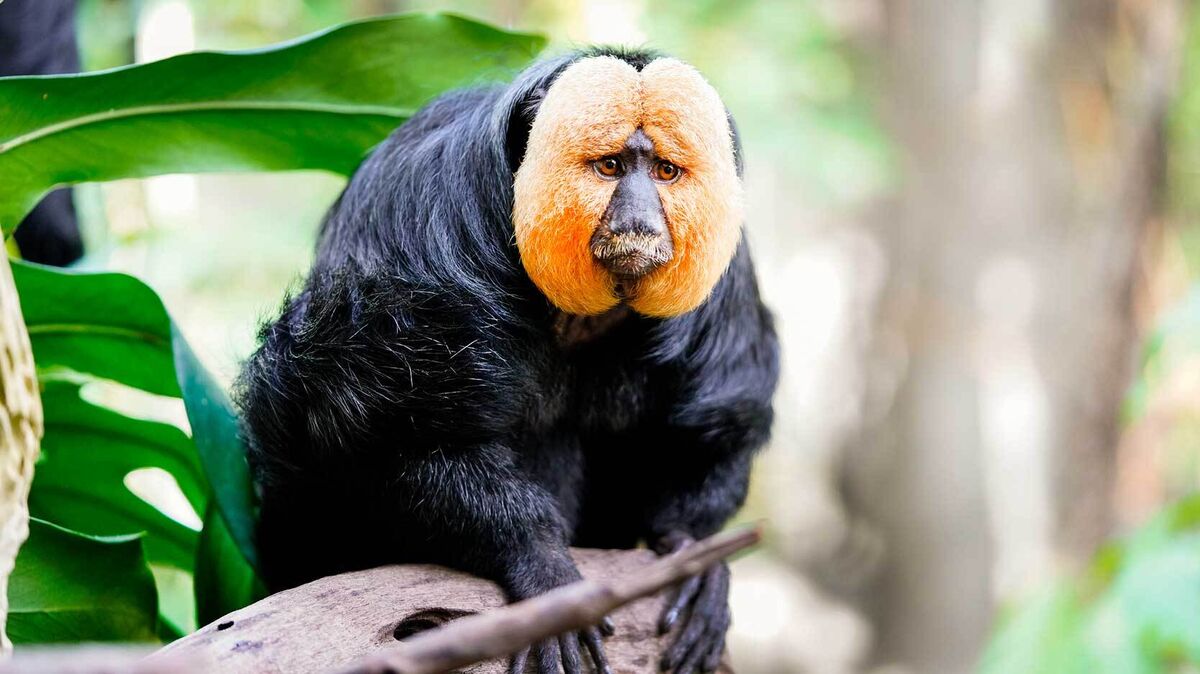
An omnivore animal is one that eats both plants and animals, which may include eggs, insects, fungi, meat, and algae. Many omnivores evolved to their current state after several years and are opportunistic feeders. They rely on both vegetation and animal protein to remain healthy. Let's enjoy some (occasionally surprising) examples of omnivores.
Omnivorous Birds Around the Globe
When you consider birds, you might only think of them as being herbivorous, or eating plants and seeds. However, many birds are omnivores. Let's take a look at these birds and their diets.
- cassowaries - eat fruit along with small animals
- chickens - feast on corn, wheat, barley, and insects
- corvids (crow family) - enjoy insects, fruits and meats
- emus - dine on acacia seeds, grass and caterpillars
- hummingbirds - eat flowers, sap, insects, and spiders
- keas - gobble up plants, beetles and small animals (rabbits)
- orioles - love fruit, nectar and insects
- ostriches - eat roots, seeds, lizards, snakes, and rodents
- rheas - enjoy a diet of leaves, clovers, seeds, frogs, and snakes
- robins - include worms, insects and fruit in their diet
- rooks - dine on plants, insects and spiders
- seagulls - eat a range of grains, berries and small mammals
- starlings - enjoy eating insects, seeds and fruit
- woodpeckers - like nuts, seeds, berries, and insects
Aquatic Birds That Are Omnivores
Aquatic birds love to stay close to bodies of water. Surprisingly, they don't eat fish alone. Aquatic birds can also dine on insects, amphibians, seeds, grain, grass, and fruit. Check out a few aquatic bird omnivore examples.
- cranes - use their long beak to scoop up seeds, nuts and insects
- ducks - float on the water eating fish, berries and aquatic arthropods
- flamingos - beautiful pink aquatic birds that dine on mollusks, small fish and algae
- Rallidae - opportunistic eater that enjoys both frogs and algae
- swans - mostly dine on aquatic plants but can eat insects and small fish
Mammals That Are Omnivores
Now, we have a class of omnivores that should come as no surprise. Everybody runs when they see a bear because we know they love meat in addition to berries. Explore a few different omnivore animals.
- aardvarks - mostly eat termites but can eat fruits for water
- badgers - mostly eat earthworms but will eat fruits
- bears (excluding giant pandas and polar bears) - berries, roots and small mammals
- chipmunks and squirrels - dine on grains, seeds and insects with the occasional bird egg
- coatis - munch on frogs, lizards and fruit
- foxes - primarily carnivorous animals but can eat berries and fungi
- hedgehogs - feed on insects, snails, grass, and melons
- mice and rats - can eat anything but like grains, seeds, meat, and cheese
- opossums - eats everything from fruits to carrion
- pigs - dine on a variety of foods from small animals to fruits and flowers
- raccoons - eat plants like berries and meat like rabbits and insects
- skunks - change diets depending on the season but eat both fruits and insects
- sloths - feed on fruits and insects

Primates Are Omnivores
The thing that distinguishes primates from other mammals is their claws. While other mammals have nails, claws, or hooves, primates only have flat nails and opposable thumbs. Humans and monkeys are part of this category. Explore what some of these famous omnivores like to eat.
- aye-ayes - feed on grubs and fruit
- galagos (bush babies) - like to eat insects but also eat sap and seeds
- gibbons (lesser apes) - forage for fruits and insects
- great apes - mostly herbivorous eating fruits and seeds but can eat other animals
- humans - eat anything from fruits and veggies to meat, eggs and fungi
- monkeys - dine on a variety of fruits, nuts, insects, and lizards
Insect, Fish and Reptile Omnivores
Here are omnivores that belong to other branches of the animal kingdom, including insects, fish and reptiles.
- spider beetles - scavengers that feed on dead insects and plants
- ants - feed on insects, honey, nectar, and dead animals
- box turtles - eat plant matter and insects
- catfish - night feeders that eat aquatic plants and mollusks
- cockroaches - scavengers that feed on meats, sweet foods and paper
- crickets - eat small insects, leaves and nectar
- flies - feed on nearly anything including blood
- opaleyes (fish) - primarily feeds on algae but also consumes invertebrates during grazing
- pygmy grasshoppers - feed on plants and animal tissue
- piranhas - consume fruits, seeds, insects, and carcasses
- wasps and yellow jackets - munch on insects and plants

Omnivores from Different Environments
Another way to approach the study of omnivores is to consider their location. Let's take a look at omnivores from the rainforest's lush terrain to dry and dusty desert plains.
Omnivores in the Amazon Rainforest
The Amazon rainforest is nature's treasure trove. Here are some of the omnivores inhabiting this beautiful land that like a variety of plants and animals.
- Andean cocks-of-the-rock (bird) - consumes fruits, berries and insects
- banded tree frogs - eat insects as an adult and plant life as a tadpole
- blue and gray tanagers (bird) - feeds on insects, fruits, berries, and flowers
- charapa turtles (giant Amazon river turtles) - dines on fruits, leaves and insects
- poison-dart frogs - carnivores as adults but omnivores as tadpoles
- spider monkeys - eat mostly fruit but does feed on some insects and bird eggs
- squirrel monkeys - munch on a variety of fruits and insects
- tamarins (primate) - like to eat insects and fruits
- toucans (bird) - snack on insects and small animals in addition to fruit
- white-faced saki monkeys - like to consume fruits, rodents and bats

Omnivores in the Desert
You'd think it might be tough to live in the desert. Alas, if your diet is open to both plants and other animals, the options abound. See what these desert omnivores survive on.
- coatimundis (a relative of the raccoon) - eats frogs, lizards, eggs, and fruit
- coyotes - fruit, flowers, rabbits, snakes, and birds, to name a few things they eat
- desert night lizards - plants, small insects and termites make up a diet
- jerboas (rodent) - seeds, plants and beetles
- rabbit-eared bandicoots (rodent) - eats fruits and insects
- roadrunners - opportunistic eaters like to forage on plants and insects
Omnivores in the Ocean
Ocean-dwellers don't live off coral or seaweed alone. Here are some examples of plant and meat-eaters living beneath the ocean blue.
- blue crabs - consume plants, algae and dead fish
- bonnethead sharks - like to munch on seagrass and smaller aquatic animals
- flatback, hawksbill and leatherback sea turtles - eat sea cucumbers, corals, seaweed, and fish
- saltwater crabs and lobsters - aquatic plants, mollusks and algae
Dinosaurs Believed to Have Been Omnivores
Since we can't go out and observe them today, we can only rely on history to tell us about dinosaurs. It turns out you wouldn't have to run full-steam ahead from every dinosaur. Some of them were plant-eaters. Some of them were meat-eaters. Some of them were both.
Here are some dinosaurs that science suspects were omnivores:
- Heterodontosaurus - had teeth for grinding and canines for puncturing
- Gallimimus - a bird-like dinosaur with long claws for picking fruit and capturing prey
- Ornithomimus - a large dinosaur with a large beak for eating small animals and vegetation
- Oviraptor - jawbones were powerful for eating both vegetation and eggs
- Therizinosaurus - forearms had strong claws, a beak and a long neck for eating insects and vegetation
- Troodons - teeth resemble herbivore teeth but were coarser, suggesting a diet including eggs, worms and insects
You Are an Omnivore
Most of us enjoy a diet consisting of plants and meat. Whatever your preference, you're in good company when it comes to our friends in nature. One thing we don't share in common with our friends in nature is carbohydrates. Have you ever seen a badger eating a bowl of pasta? In truth, we could borrow from our primate friends by steering clear of an abundance of simple carbs. Instead, a diet that mixes in some of these complex carbohydrates will keep us healthily atop the food chain.